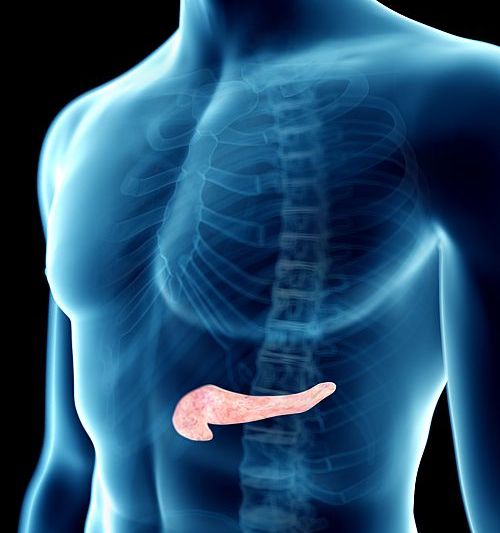Diabetes

Diabetes is a complex disease associated with a significantly increased risk of cardiovascular morbidity and mortality. Other chronic conditions such as hypertension, dyslipidemia and heart failure often coexist with diabetes, further increasing the complexity of the disease and its management. Serious complications, including micro- and macrovascular conditions, such as retinopathy, atherosclerosis, peripheral artery disease and diabetic autonomic failure can also arise from diabetes.
Central hemodynamic measures of wave reflection and aortic pulse wave velocity (PWV, the most commonly used surrogate of arterial stiffness) have been shown to be significantly associated with both Type 1 and Type 2 diabetes, as well as earlier pre-diabetic states. Moreover, arterial stiffness is also associated with comorbidities and complications associated with diabetes. [38,56,57]
Arterial stiffness may play an important role in risk stratification and be a key component in the management strategy for diabetic patients. [58,59] Central arterial pressure waveform analysis and arterial stiffness assessments can provide additional information to aid individualized therapeutic decisions and, importantly, allow for treatment effects to be monitored.
Strategies to reduce the high cardiovascular risk in individuals with diabetes include better glycaemic control and reduction of cardiovascular risk factors, including hypertension and dyslipidemia. The significant association of central blood pressure waveform parameters with diabetes provides a foundation for therapeutic targets and modalities to investigate the impact of various treatment strategies.
Insulin therapy has been shown to improve aortic augmentation index (AIx), a measure of arterial stiffness) in patients with Type 2 diabetes48 and reduce aortic PWV in patients with Type 1 diabetes.[49]
Angiotensin receptor blockers (ARB) are recommend in diabetic patients with hypertension, and two ARB’s, Valsartan and Telmisartan, have been shown to reduce aortic PWV in patients with Type 2 diabetes.[50,51] In a cohort of patients with impaired glucose tolerance, treatment with rosiglitazone significantly reduced aortic PWV and AIx, and ramipril resulted in a significant reduction in AIx.[52]
Ascorbic acids have been shown to reduce AIx over a 4-week treatment period in Type 2 diabetes,53 and the sugar substitute, erythritol, significantly reduced central aortic pressure after a daily intake for a 4-week period in Type 2 diabetes. [54] Daily intake for one year of flavinoids have also been shown to reduce aortic PWV in patients with Type 2 diabetes.[55] Diabetes is a complex disease associated with a significantly increased risk of cardiovascular morbidity and mortality. Other chronic conditions such as hypertension, dyslipidemia and heart failure often coexist with diabetes, further increasing the complexity of the disease and its management. Serious complications, including micro- and macrovascular conditions, such as retinopathy, atherosclerosis, peripheral artery disease and diabetic autonomic failure can also arise from diabetes.
Central hemodynamic measures of wave reflection and aortic pulse wave velocity (PWV, the most commonly used surrogate of arterial stiffness) have been shown to be significantly associated with both Type 1 and Type 2 diabetes, as well as earlier pre-diabetic states. Moreover, arterial stiffness is also associated with comorbidities and complications associated with diabetes. [38,56,57]
Arterial stiffness may play an important role in risk stratification and be a key component in the management strategy for diabetic patients. [58,59] Central arterial pressure waveform analysis and arterial stiffness assessments can provide additional information to aid individualized therapeutic decisions and, importantly, allow for treatment effects to be monitored.
Strategies to reduce the high cardiovascular risk in individuals with diabetes include better glycaemic control and reduction of cardiovascular risk factors, including hypertension and dyslipidemia. The significant association of central blood pressure waveform parameters with diabetes provides a foundation for therapeutic targets and modalities to investigate the impact of various treatment strategies.
Insulin therapy has been shown to improve aortic augmentation index (AIx), a measure of arterial stiffness) in patients with Type 2 diabetes48 and reduce aortic PWV in patients with Type 1 diabetes.[49]
Angiotensin receptor blockers (ARB) are recommend in diabetic patients with hypertension, and two ARB’s, Valsartan and Telmisartan, have been shown to reduce aortic PWV in patients with Type 2 diabetes.[50,51] In a cohort of patients with impaired glucose tolerance, treatment with rosiglitazone significantly reduced aortic PWV and AIx, and ramipril resulted in a significant reduction in AIx.[52]
Ascorbic acids have been shown to reduce AIx over a 4-week treatment period in Type 2 diabetes,53 and the sugar substitute, erythritol, significantly reduced central aortic pressure after a daily intake for a 4-week period in Type 2 diabetes. [54] Daily intake for one year of flavinoids have also been shown to reduce aortic PWV in patients with Type 2 diabetes.[55]
Downloads


